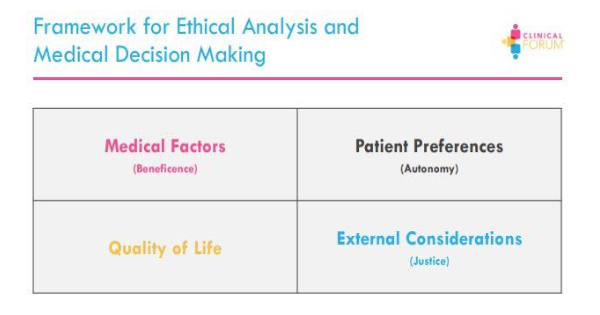I thoroughly enjoyed attending Digestive Disease Week’s session on Role of Diet, Lifestyle, and Environment in Inflammatory Bowel Disease. Let's start from the beginning and understand why studies surrounding diet, lifestyle, and environment are so important in understanding IBD.
IBD affects nearly 3 million Americans and over 200,000 Canadians. IBD is an immune-mediated disease that occurs due to certain, unknown environmental exposures in those with underlying genetic predispositions. Research on environmental exposures is needed to discover what environmental factors may contribute to an individual receiving an IBD diagnosis. This research will not only create an overall improved understanding of IBD, but also contribute to reducing the onset of IBD as well as cures for IBD.
Ultra-Processed Foods and Risk of Crohn’s Disease and Ulcerative Colitis
Two speakers in this session I found extremely interesting, the first being Dr. Chun-Han Lo. Dr. Lo reviewed his study on ultra-processed foods and risk of Crohn’s Disease and ulcerative colitis. The Western diet is thought to increase the risk of IBD through changes in the gut microbiome which can trigger immune function when compared to the Mediterranean diet.
Foods were separated into four categories from least to most processed:
Unprocessed
Processed culinary ingredients
Processed foods
Ultra-processed food products
Dr Lo explains that right now, it is widely known that higher consumption of ultra processed food products is associated with all-cause mortality, cardiovascular disease, metabolic syndrome, obesity, and cancer. Agents and thickeners, that are often added to ultra-processed food products, were also examined. The study aimed to examine the associations between ultra-processed food products and the risk of incident of Crohn’s Disease and ulcerative colitis.
The results indicated that higher consumption of ultra processed food products, specifically ultra processed grain foods and fat and sauces, was associated with an increased risk of Crohn’s Disease. Additionally, emulsifiers and thickener containing foods increased the risk of Crohn’s Disease. No subgroups had an association with risk of ulcerative colitis. This differentiates the impact food may have on Crohn’s Disease versus ulcerative colitis, furthering complexifying IBD. Further studies are needed on the effect of ultra processed food products in patients with established IBD may be warranted.
Although you may not be surprised by the results, studies like these are so important to allow room for more niche research and continue to allow researchers and doctors to understand the WHY behind IBD. As a Crohn’s Disease patient with many food intolerances, I am excited to see research surrounding diet and quality of food. There is little research backing the quality of food, and many suggest following a specific diet such as low FOD-map, gluten free, dairy free, among many others. It’s extremely exciting to see additional research surrounding foods, specifically processed versus unprocessed foods. My hopes are that this study can contribute to encouraging people to eat better quality foods and, in turn, reduce Crohn’s Disease diagnoses. Further, my mind jumps to future research covering whether reducing ultra processed food products after an IBD diagnosis could help treatment and management of disease.
Development of a Composite Environmental Score to Predict Age of Onset and Outcomes in IBD
Dr. Nidah Shabbir Khakoo spoke on the development of a composite environmental score to predict age of onset and outcomes in IBD. Specifically, Dr. Khakoo focuses on the fact that many environmental exposures associated with IBD are increasingly seen with Westernization. The study aimed to explore the relationship between individual environmental exposures and the age of onset of IBD. This study is extremely important in order to come to the understanding of what can cause a person to be diagnosed with IBD earlier in life, rather than later.
As someone with IBD, I have frequently wondered what environmental exposures in my life have caused my IBD to have an earlier onset? Why did I receive my IBD diagnosis in my early twenties compared to others that are diagnosed in their fifties? These studies are crucial to understand potential causes for earlier disease onset and overall understanding of IBD.
This study was administered on adult patients previously diagnosed with IBD. An environmental survey that queried age-dependent and lifetime exposures to various environmental factors were given among the participants to identify the environmental exposures each subject has had throughout their lifetime while looking at the age of their diagnosis. It is important to note that this study had a large number of hispanics, an underrepresented group in IBD research. The study looked at the age of disease onset, specifically comparing hispanics vs non-hispanics and Crohn’s disease vs ulcerative colitis patients.
Earlier Ulcerative Colitis Onset:
Earlier Crohn’s Disease Onset:
Dr. Khakoo shares that the environmental score presented explains a greater amount of the variation in the age of UC onset than Crohn’s Disease onset. Additionally, weighted and not-weighted scores did not predict disease location, presence of extraintestinal manifestations, likelihood of surgery or hospitalization, or number of biologics needed. Certain environmental exposures, such as bottle feeding, showed opposing effects in ethnic groups with IBD, leading to assume that cultural and socioeconomic factors may influence disease onset.
These results give a baseline that other research needs to build off of. It is becoming increasingly evident that ethnicity differentiates environmental factors contributing to IBD and more research is needed to understand these differences. I’m looking forward to hearing of future studies regarding this subject and am hopeful more nuances regarding environmental exposures and the timing of IBD onset will be discovered.
It was great to hear from multiple experts about diet and environmental factors relating to IBD. I think that the data so far shows that there is a lot of work to do to understand what environmental factors contribute to IBD. I am looking forward to seeing future studies dive more in-depth to discover the causes of IBD. I am incredibly grateful to have heard from Dr. Chun-Han Lo and Dr. Nidah Shabbir Khakoo, and am confident these studies will have a large influence on future research on Inflammatory Bowel Disease.








